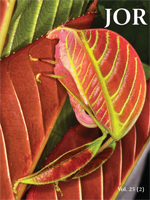Determining whether sexually selected characters affect reproductive isolation is key to understanding the significance of such selectively driven divergence in speciation. Divergence in the shape of male genitalia is ubiquitous in many insect taxa and can have important fitness consequences for males within a species. Yet, it is unclear whether this selectively divergent character affects gene flow among species. We test this hypothesis using explicit predictions about the clinal transition in genitalic shape across a hybrid zone between the grasshopper subspecies Barytettix humphreysii humphreysii and B. h. cochisei. Slight morphological differences in genitalic shape across their ranges raised the possibility that local processes might give misleading interpretations about sexual selection's potential contribution to reproductive isolation. Therefore, we examined multiple transects to explore the effectiveness of genitalic divergence as a barrier to gene flow on a background of potentially different extrinsic (e.g., environmental conditions) or intrinsic (e.g., genetic makeup) factors. If sexual selection is the predominant factor maintaining the hybrid zone, the shape of the clines between transects is expected to be concordant, thereby overriding potential dispersal differences associated with varying environmental and ecological conditions or variation in population densities that would cause cline shape to vary among localities. Furthermore, if selection against hybrids with intermediate genitalic morphologies does indeed represent a strong barrier to gene flow, the morphological transition between the adjacent subspecies is predicted to be quite steep. These predictions were supported by the geometric morphometric analyses, suggesting that genitalic divergence plays a direct role in reproductive isolation and that sexual selection plays a predominant role in the maintenance of the subspecies differences. Thus, the results of our study provide compelling evidence that postmating-prezygotic interactions can indeed limit gene flow, and consequently may play an important role in speciation. Using this framework, we suggest future studies that can address a number of remaining questions about the nature of selection, and ultimately, how sexual selection is operating in these taxa.
How to translate text using browser tools
1 December 2016
Tests of the Role of Sexual Selection in Genitalic Divergence with Mutiple Hybrid Clines
L. Lacey Knowles,
Thomas M. Chappell,
Eladio J. Marquez,
Theodore J. Cohn

Journal of Orthoptera Research
Vol. 25 • No. 2
December 2016
Vol. 25 • No. 2
December 2016
cryptic female choice
geometric morphometrics
introgression
postmating-prezygotic interactions
reproductive isolation




